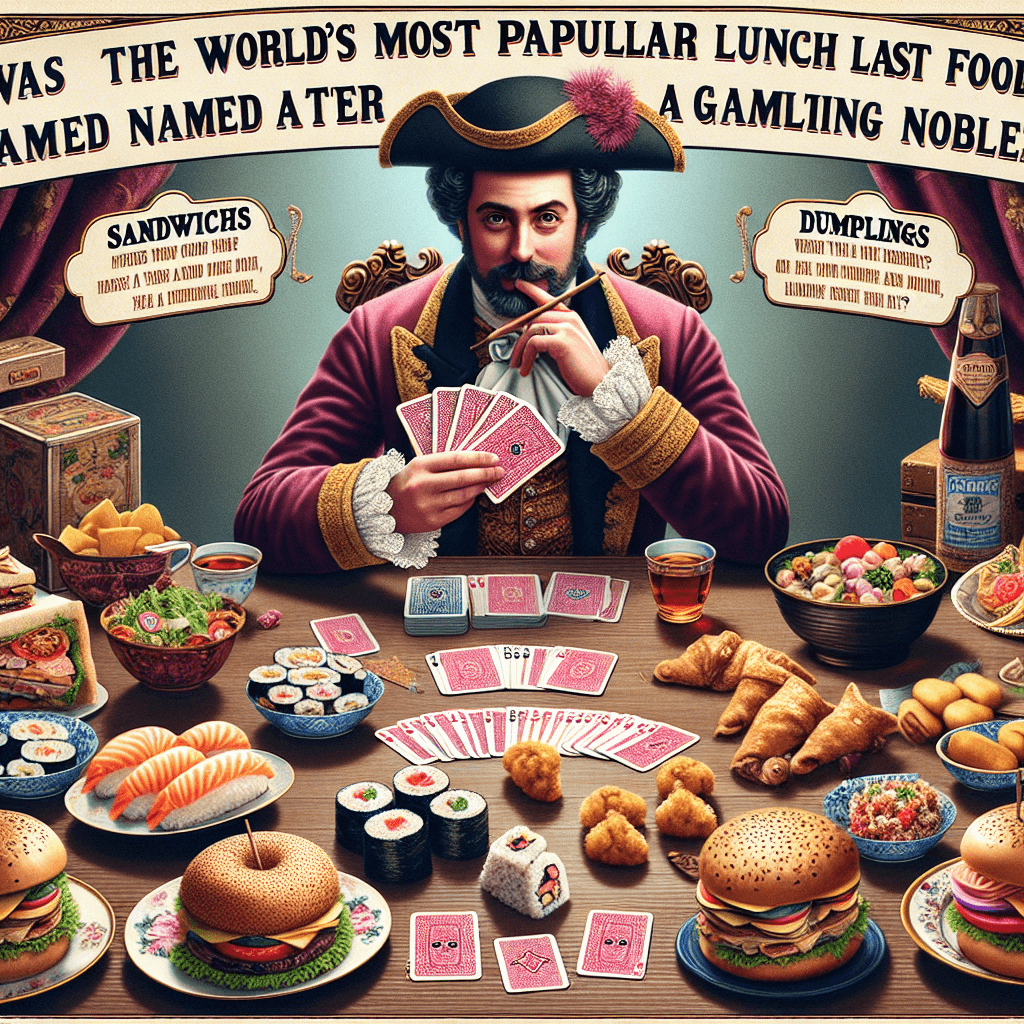Was the world's most popular lunch food named after a gambling nobleman
The world's most convenient meal wasn't born in a kitchen, but at a high-stakes card table thanks to a nobleman who simply refused to fold.


Too Long; Didn't Read
TLDR: The sandwich is likely named after the 4th Earl of Sandwich, an avid gambler who asked for meat between two slices of bread so he could eat without leaving the card table.
From Cards to Crusts: Was the World's Most Popular Lunch Food Named After a Gambling Nobleman?
Think about your last lunch. Was it, by any chance, two slices of bread with a delicious filling tucked in between? If so, you’re in good company. The sandwich is a global culinary titan, a staple of lunchboxes, cafes, and quick meals everywhere. But have you ever wondered where this simple, brilliant invention got its name? A popular and tantalizing story points directly to an 18th-century British aristocrat with a notorious passion for gambling. This post will delve into the history books to uncover the truth behind the legend of the sandwich and its noble, card-playing namesake.
The Man, The Myth, The Legend: The 4th Earl of Sandwich
The man at the center of our story is John Montagu, the 4th Earl of Sandwich (1718-1792). Far from being just a historical footnote, Montagu was a prominent British statesman, serving as the First Lord of the Admiralty and a patron of Captain James Cook, who named the Sandwich Islands (now Hawaii) in his honor.
However, the Earl is most famously remembered for a legend tied to his lifestyle. The popular tale goes like this:
During a particularly long and intense gambling session, allegedly lasting over 24 hours, the Earl grew hungry but refused to leave the card table for a formal meal. To avoid getting greasy fingers on his cards, he instructed a servant to bring him slices of roast beef tucked between two pieces of toasted bread. His fellow gamblers, intrigued by the convenient and clean meal, began ordering "the same as Sandwich!" And just like that, a culinary icon was supposedly born and named.
This story first appeared in print in a 1772 travel book, A Tour to London, by French writer Pierre-Jean Grosley, giving it a veneer of historical credibility.
Peeling Back the Layers: Fact vs. Fiction
So, is this dramatic story of high-stakes gambling and culinary innovation true? The answer is a classic "yes, but..."
There is little doubt among historians that John Montagu is, in fact, the sandwich's namesake. The food's association with him is well-documented from his own time. However, the reason for his portable meal is where the story gets a bit murky.
While the Earl was known to enjoy gambling, many modern historians, including his biographer N.A.M. Rodger, suggest a more work-oriented and less scandalous origin. Montagu was an incredibly busy and dedicated administrator, often working long hours at his desk in the Admiralty. It is far more likely that he ordered the meat-between-bread creation to be brought to his desk so he could continue with his demanding work without interruption.
The gambling narrative may have been a piece of gossip or even political slander spread by his rivals to paint him as a dissolute and frivolous character. Attaching his name to a gambling binge was a more exciting story than associating it with a pile of paperwork.
An Idea Older Than Its Name
While the Earl of Sandwich certainly gave the food its famous name and helped popularize it among the English aristocracy, he did not invent the concept of putting filling between bread. The idea is ancient.
- As far back as the 1st century B.C., the Jewish sage Hillel the Elder is recorded during Passover as having eaten a mixture of lamb, nuts, and bitter herbs between two pieces of soft matzah.
- Throughout the Middle Ages, thick slabs of stale bread called "trenchers" were used as edible plates to hold meat and sauces.
- Rural laborers across Europe had for centuries packed simple, portable lunches of bread and cheese or cured meat.
What the Earl did was make this commoner's convenience fashionable. By ordering it, he gave it a name and a seal of approval in high society, which ultimately led to its widespread adoption.
The Verdict on the Lunch Legend
So, was the world's most popular lunch food named after a gambling nobleman? Absolutely. John Montagu, the 4th Earl of Sandwich, is the undisputed namesake of our beloved sandwich. However, the enduring image of him ordering it mid-gamble is likely an embellished version of the truth. The more probable scenario is that this convenient meal was born out of the necessity of a hard-working statesman tied to his desk, not a gambler glued to the card table.
Regardless of whether it was fueled by a commitment to work or a passion for play, the Earl's simple request gave a name to a culinary concept that would conquer the world. The next time you unwrap your lunch, you can thank an 18th-century British Earl for giving your meal its famous title.


